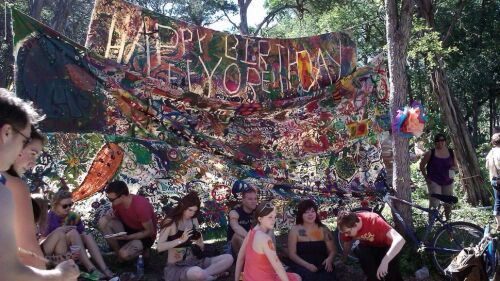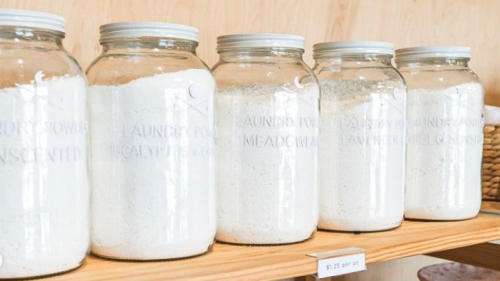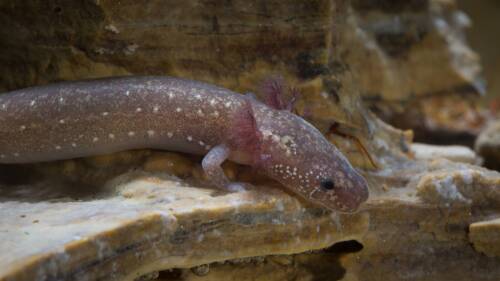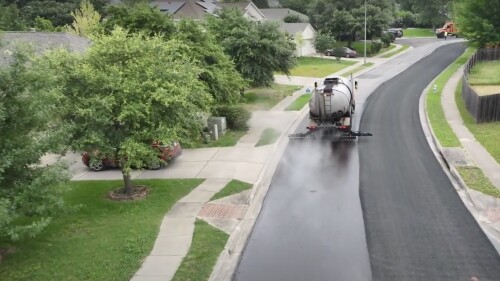Inside the 2024 State of the Environment Report
April 23, 2025
This snapshot into the state of Austin’s wildlife, plantlife, and air quality shows how initiatives have improved conditions year-over-year.

Photo by ATXtoday
Earth Day may be over, but it’s still Earth Month, and the city of Austin is keeping the celebration going with the release of its 2024 State of Our Environment Report.
Put together by Austin’s Interim Environmental Officer Liz Johnston, the report provides a snapshot of Austin’s ecological health and progress year-over-year. This year’s report is split into six sections: air quality, climate change, waterways, urban forest, public open space, and wildlands.
Let’s talk about the highlights.
Air quality is generally improving, but poor quality days are worse
If you’ve noticed allergy season lasting longer, air quality could be part of the problem. Poor air quality can cause health problems like heart and lung diseases. The report measured air quality in two ways: ground-level ozone and fine particulate matter.
- Ground-level ozone (aka “bad” ozone) is created by sunlight triggering a chemical reaction between oxygen-containing molecules + pollution.
- Central Texas usually sees between five and 10 unhealthy for sensitive groups or unhealthy ozone days — there were eight-10 in 2024 and 17-20 in 2023.
- Fine particulate matter (aka PM2.5) is a pollutant caused by things like burning fuel, power plants, wildfires, and Saharan dust. The Environmental Protection Agency’s standards for PM2.5 is 9 micrograms per cubic meter — Austin averages about 9.3 micrograms per cubic meter.
- There were 10 unhealthy PM2.5 air days in 2024, and 20 in 2023.
Greenhouse gas emissions are dropping
Austin’s greenhouse gas emissions peaked in 2011 and have been on the decline ever since. Now, the city aims to reach net-zero by 2040.
The city plans to hit that goal through its Climate Equity Plan, which will focus on creating sustainable buildings, transportation networks and land use, electric transportation, food + product consumption, and natural systems.
Last year, the city secured federal funding to the tune of $242 million, which will be used to support the Neighborhood Access and Equity and Solar for All programs, address transportation demand, and create EV charging stations.

Photo by @mrnorthstar
Waterway conservation is underway
Creeks, and lakes, and aquifers, oh my. Last year, the Barton Springs Edwards Aquifer Conservation District declared its first Stage 4 Exceptional Drought, which has made conservation efforts imperative.
A major milestone: The Bond for Open Space Acquisition wrapped, which added 6,800+ acres to the Barton Springs zone of the Water Quality Protection Lands in 2024.
Let’s peek into local watersheds: the land that diverts rainwater into creeks, lakes, and aquifers.
- There are 1,000+ miles of creeks in Austin — click here to learn about their Environmental Integrity Index scores.
- Austin’s three main reservoirs — Lake Austin, Lady Bird Lake, and Lake Walter E. Long — all scored fair on the Austin Lakes Index.
- Local aquifers feed 1,500+ springs in Austin and are home to endangered species like the Barton Springs salamander.
Trees are growing
Our local trees just keep growing. Of Austin’s 33 million urban trees, 12.2 million have a trunk diameter of 5+ inches. Trees not only provide shade — they also purify the air, enhance our environment, and shape the landscape.
Some fast facts about the urban forest:
- Austin is home to 67 species. Ashe juniper, cedar elm, Texas persimmon, live oak, and sugar berry trees make up 67% of the entire population.
- The urban forest is worth $12.4 billion — meaning that’s how much it would cost to replace them.
- Roughly 41% of the city’s jurisdiction is under canopy cover.

Photo by ATXtoday
Parkland + green space is increasing
The city of Austin passed a resolution to increase access to parks in 2009. Today, more people than ever are within walking distance of green space, and in 2024, the city added 500 acres of parkland.
More wildlands are being preserved
Like parkland, the city of Austin is on a mission to conserve wild places. Last year, it added 784 acres to the Austin Water’s Wildlands program, with 49,054 acres under its protection.
Additionally, birds like the Golden-cheeked warbler, cave invertebrates like the cave cricket, and plants like the bracted twistflower are being monitored in Central Texas. Likewise, restoration efforts for caves, grassland savanna, and juniper-oak woodlands are underway.
Phew — read the full report here for even more detail.
More from ATXtoday
Help us predict the 2025 ACL Festival lineup
ACL Festival will return to Zilker Park the weekends of Friday, Oct. 3-Sunday, Oct. 5 + Friday, Oct. 10-Sunday, Oct. 12 — help us guess who will be there.
Try This: Adult Easter egg hunts in Austin
Who says the kids should have all the fun? Here are four Easter egg hunts where everybunny 21 and up can relive the nostalgia.
Search
RECENT PRESS RELEASES
Related Post











